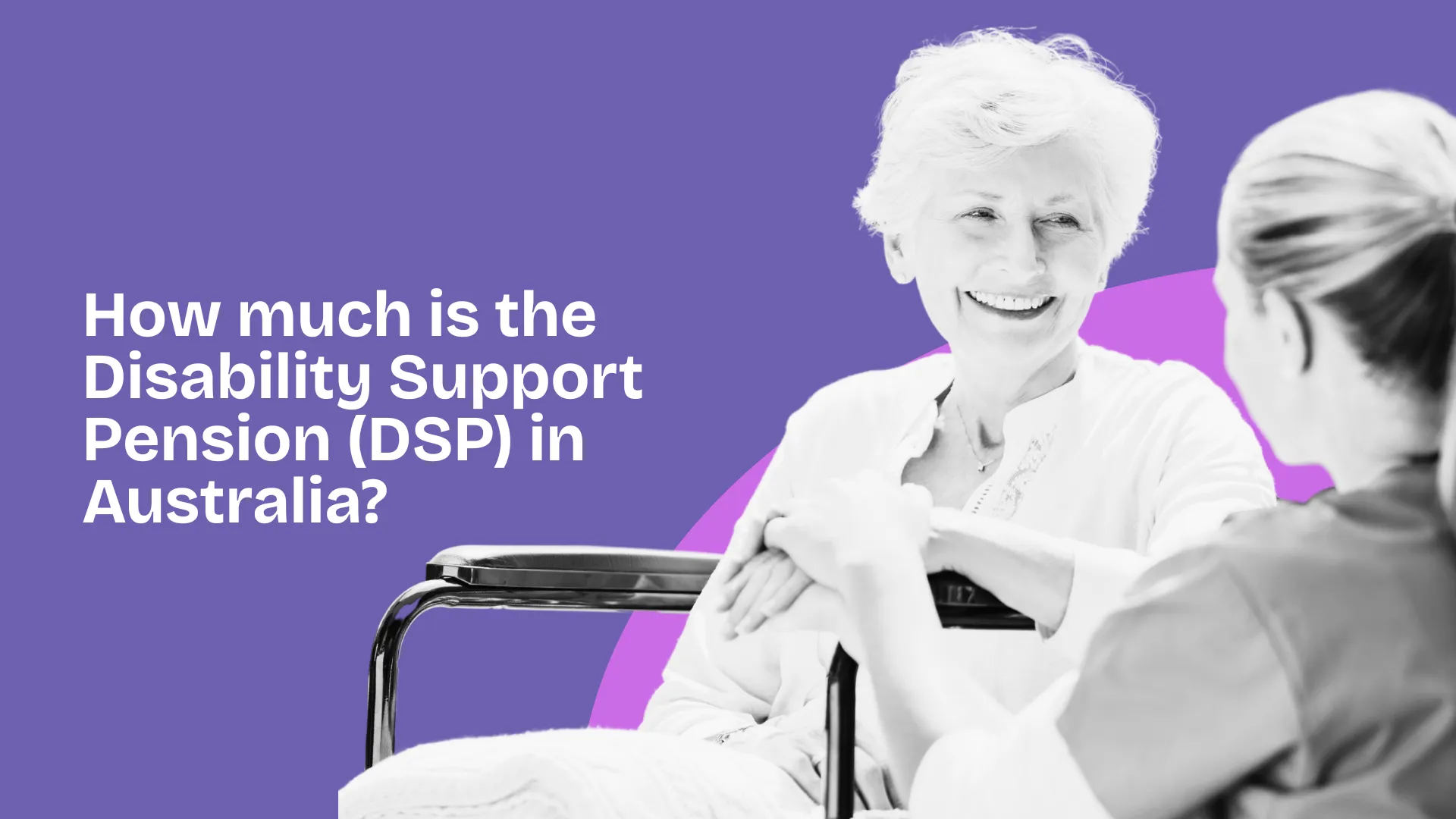Living with a long-term disability can affect many parts of life — from physical health to emotional wellbeing and financial stability. If working isn’t possible because of your condition, covering everyday costs can become a serious challenge.
The Disability Support Pension (DSP) is a payment from the Australian Government that helps people with a permanent physical, intellectual, or psychiatric condition. It’s paid every two weeks and is designed to ease financial pressure for people who can’t work due to disability.
Key Facts About the Disability Support Pension (DSP)
- DSP is a fortnightly payment for people with a permanent disability that stops them from working.
- Payment rates depend on your age, relationship status, income, and assets.
- Rates are reviewed twice a year — in March and September.
- As of March 2025, single adults over 21 can receive up to $1,149.00 per fortnight.
- Each member of a couple may receive up to $866.10 per fortnight.
- People under 21 without children receive between $569.60 and $822.60, depending on their situation.
- Income and assets tests apply unless you’re permanently blind.
What is the Disability Support Pension?
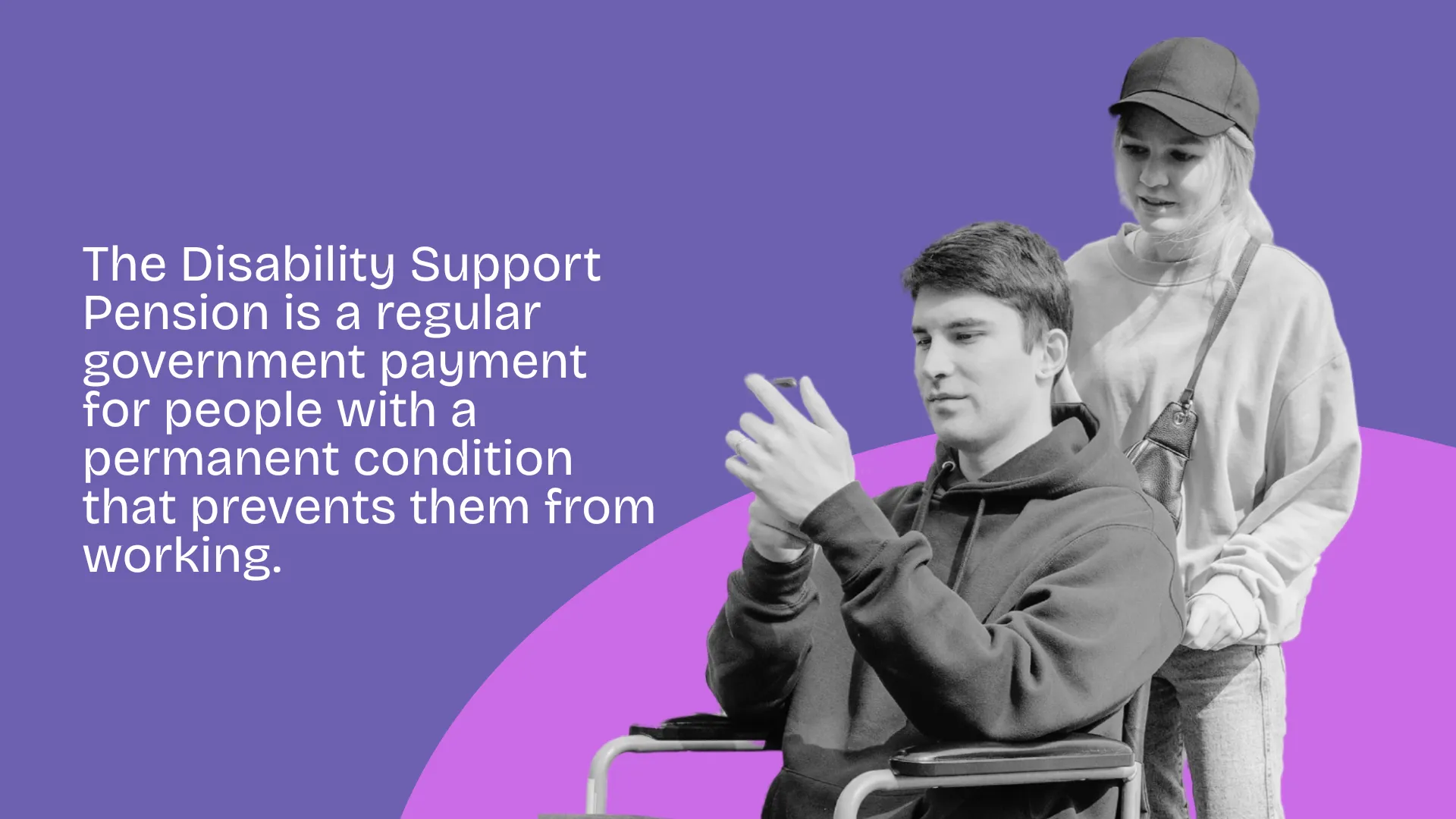
The Disability Support Pension (DSP) is an income support payment provided by the Australian Government for people with a permanent physical, intellectual, or psychiatric condition that prevents them from working. It’s designed to help those who are unable to work 15 hours or more per week due to their condition.
The DSP was introduced in 1991, replacing two earlier payments: the Invalid Pension and the Sheltered Employment Allowance. The goal was to create a single, more inclusive system that supported people with disability while encouraging independence where possible.
To qualify for the DSP, a person must:
- Be aged 16 or older
- Have a permanent medical condition that significantly limits their ability to work
- Meet residency requirements (generally, Australian residents for at least 10 years)
- Satisfy the income and assets tests
- Undergo a Job Capacity Assessment (JCA) or Disability Medical Assessment to determine eligibility
In some cases, people who are permanently blind may qualify without going through the usual medical or work capacity assessments.
The DSP is paid fortnightly and includes additional support such as:
- A Pensioner Concession Card, which gives access to cheaper medicines and discounts on utility bills, transport, and health services
- Rent Assistance, if you’re renting and meet certain criteria
- Access to Employment Services, if you’re able and willing to explore work or training in future
The amount you receive depends on your age, relationship status, income, and the value of your assets. Rates are adjusted twice a year, in March and September, to keep up with inflation and cost-of-living changes.
The DSP plays a vital role in Australia’s social support system, offering financial stability to people with significant disabilities while promoting dignity, independence, and access to essential services.
What are the eligibility requirements for the Disability Support Pension (DSP)?
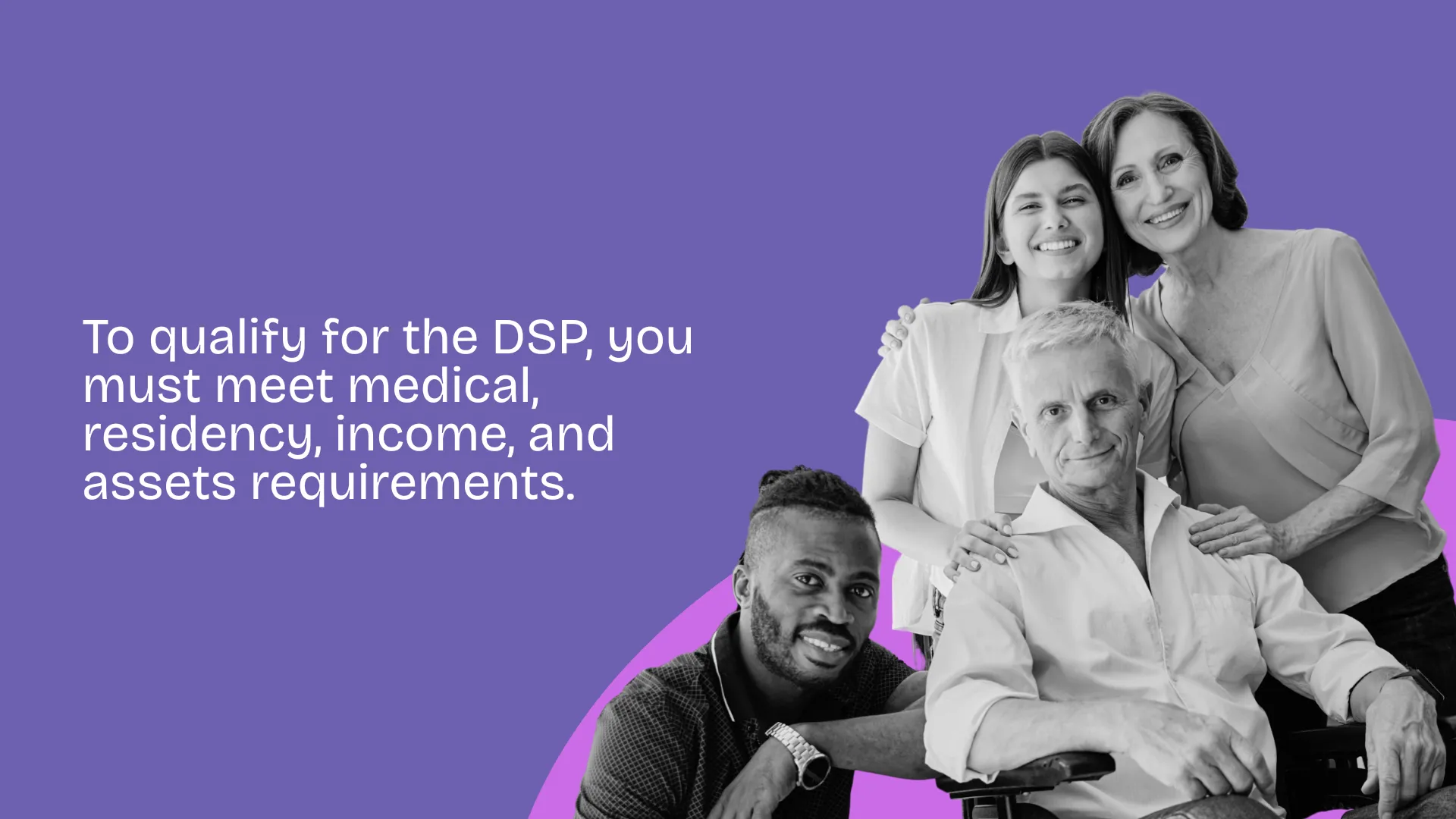
To qualify for the Disability Support Pension (DSP), you must meet a range of medical, work capacity, residency, income, and asset requirements. Here’s what’s generally involved:
Medical Requirements
- You must have a permanent physical, intellectual, or psychiatric condition.
- The condition must be fully diagnosed, treated, and stabilised.
- It must prevent you from working 15 hours or more per week within the next two years in any job suited to your skills, training, or experience.
- Most applicants are required to undergo a Disability Medical Assessment with an independent government-contracted doctor.
Work Capacity Requirements
- You need to demonstrate that your condition significantly reduces your ability to work.
- If you’re under 35, you may need to have actively participated in a program of support through a recognised employment service.
Residency Requirements
- You must be an Australian resident and present in Australia when you lodge your claim.
- You must have lived in Australia for at least 10 years in total, including at least 5 years of continuous residence.
- Some exceptions apply, such as for humanitarian entrants and certain international agreements.
Income and Assets Test
- Your income and the value of your assets must fall within Centrelink’s limits.
- If your income or assets exceed the threshold, your DSP payment may be reduced or stopped.
- People who are permanently blind may be exempt from these tests.
How much can you get on the Disability Support Pension (DSP)?
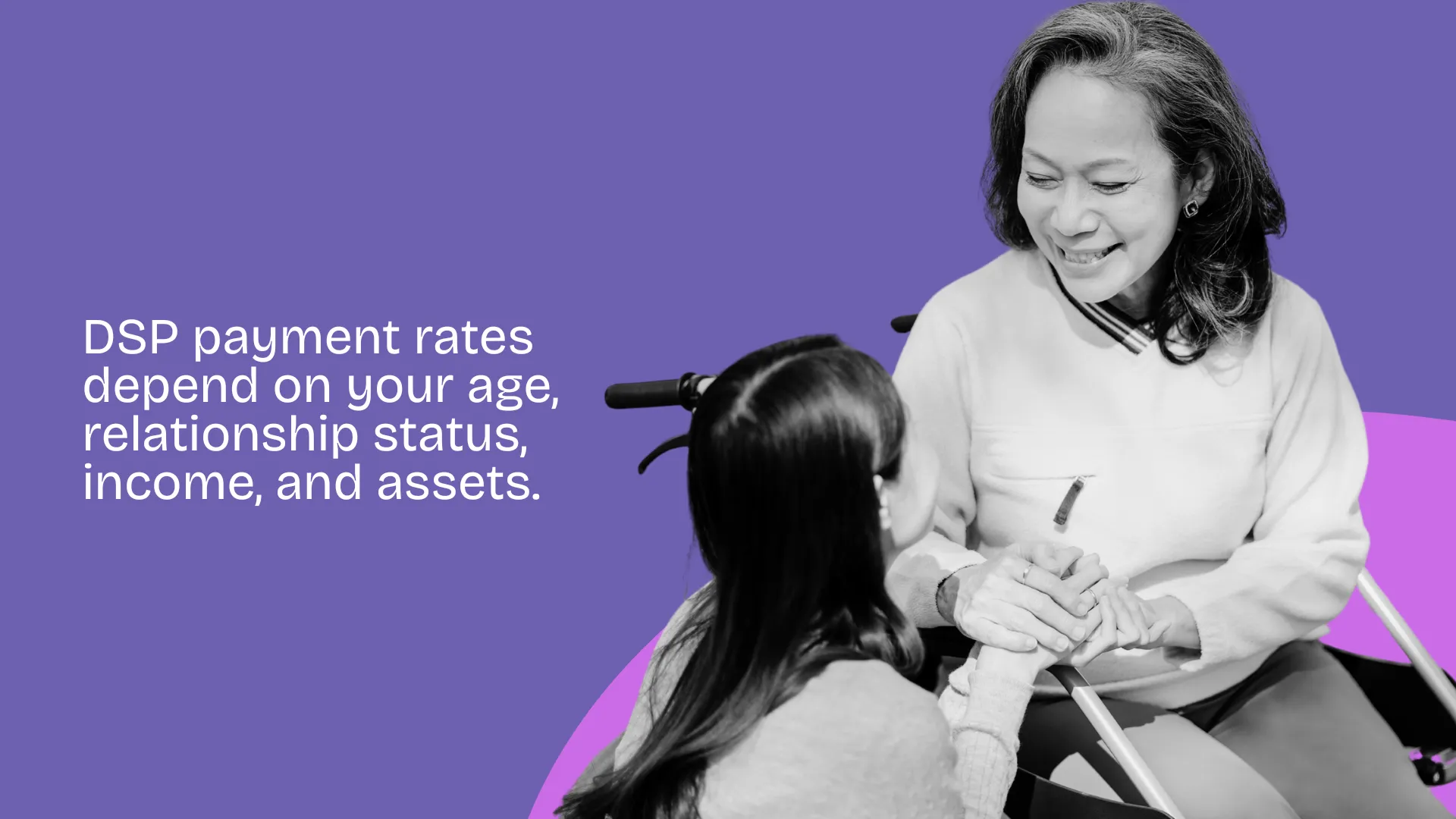
The Disability Support Pension (DSP) is paid fortnightly, and the amount you receive depends on several factors — including your age, relationship status, living situation, income, and the value of your assets. The payment is made up of a base rate, a Pension Supplement, and an Energy Supplement, and is reviewed every March and September in line with inflation and cost-of-living changes.
DSP payment rates (as of March 20, 2025)
For people aged 21 or over, or under 21 with a dependent child:
These rates are the maximum you can receive if you meet the full eligibility criteria and fall within income and asset limits.
- Single: $1,149.00 per fortnight
- Each member of a couple: $866.10 per fortnight
- Couple combined rate: $1,732.20 per fortnight
- Couple separated due to illness or caring responsibilities (each): $1,149.00 per fortnight
These rates apply when you’re considered to be receiving the full pension and don’t have income or assets that reduce your payment.
For people under 21 without dependent children:
If you’re under 21, your DSP rate depends on whether you’re considered independent or dependent on a parent or guardian. Rates also include the Youth Disability Supplement.
- Single, under 18, dependent: $569.60 per fortnight
- Single, under 18, independent: $822.60 per fortnight
- Single, 18–20, dependent: $631.80 per fortnight
- Single, 18–20, independent: $822.60 per fortnight
- Couple (each): $822.60 per fortnight
What influences the amount you receive?
Several factors can reduce or affect your DSP payment:
- Income test: Centrelink uses your income from work, investments, or other sources to determine whether you’re eligible for the full rate or a reduced rate. If your income exceeds a set threshold, your DSP amount will decrease progressively. The more you earn, the less you may receive.
- Assets test: Your DSP is also affected by the total value of your assets — including savings, property (excluding your main home), and investments. Asset limits vary depending on whether you’re single or in a couple, and whether you own your home. If your assets are above the threshold, your DSP payment will be reduced or cut off.
- Living arrangements: Your relationship status and whether you’re living with a partner will determine whether you’re paid the single or couple rate. People separated due to illness or caring responsibilities may still receive the higher single rate.
- Indexation: DSP rates are adjusted twice a year — in March and September — to keep up with inflation. These updates ensure the payment continues to reflect changes in the cost of living.
Example scenarios
- A single person over 21, living alone, with no income or assessable assets: $1,149.00 per fortnight
- A couple living together, with limited assets and no income: $1,732.20 combined per fortnight
- A single person under 21, living independently and studying: up to $822.60 per fortnight, depending on other circumstances
Are there any extra payments with the Disability Support Pension (DSP)?
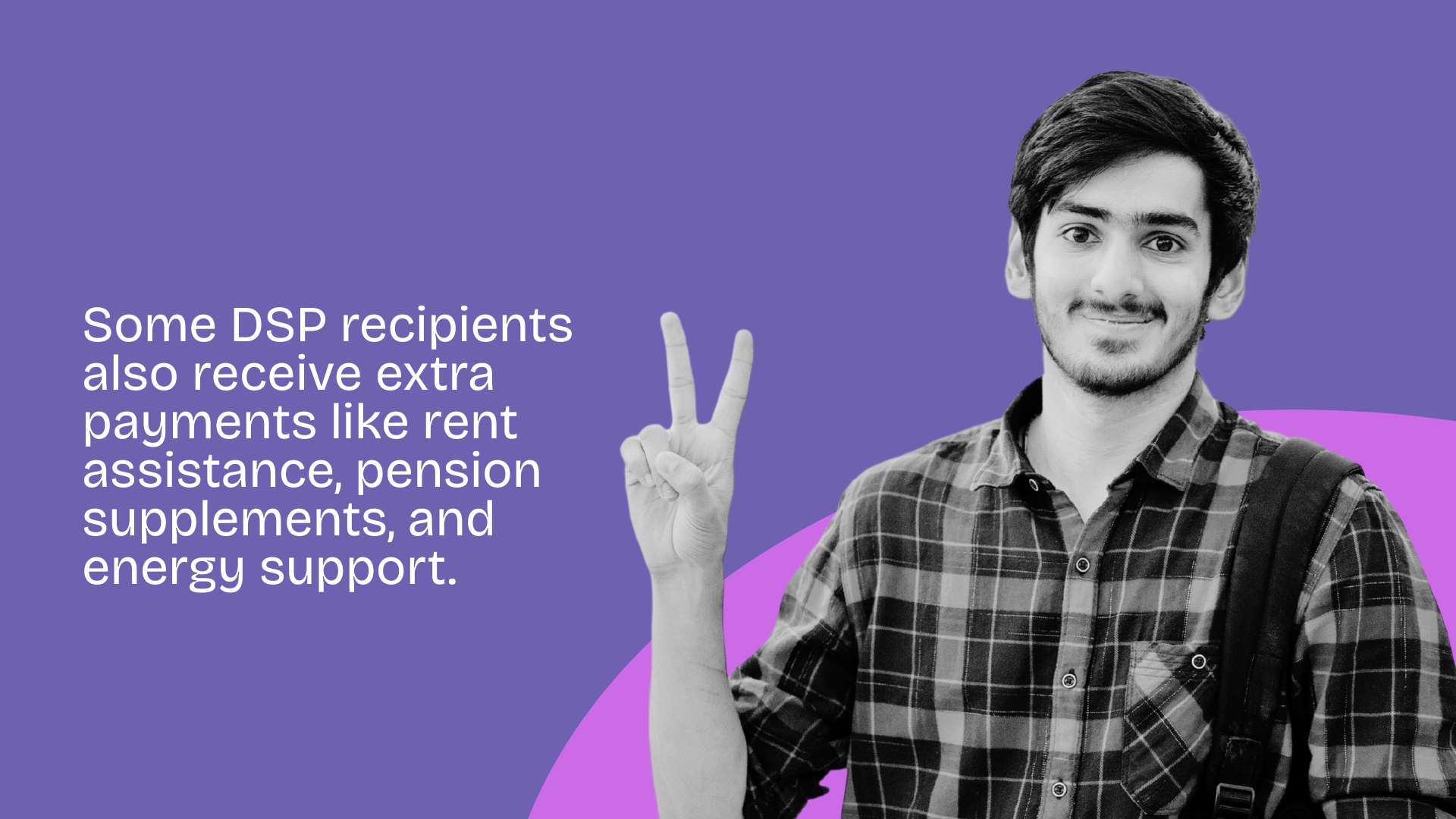
People who receive the DSP may also qualify for extra payments that help cover everyday living costs. These supplementary payments are added automatically to your fortnightly pension if you’re eligible — there’s no need to apply separately.
Here are the most common ones:
Pension Supplement
This payment helps with ongoing costs like phone bills, groceries, and basic services. The amount depends on your circumstances, usually ranging from $25 to $80 per fortnight.
Energy Supplement
Designed to ease the pressure of rising power bills, this small payment is included with your pension. Most people receive around $10 to $15 every two weeks.
Rent Assistance
If you rent in the private market and pay above a certain amount, you may get Rent Assistance.
- Singles may receive up to $188 per fortnight
- Couples (combined) may receive up to $177 per fortnight
These supplementary payments are reviewed regularly and may change based on your income, living situation, or rent amount.
What is the income cut-off for the Disability Support Pension (DSP)?
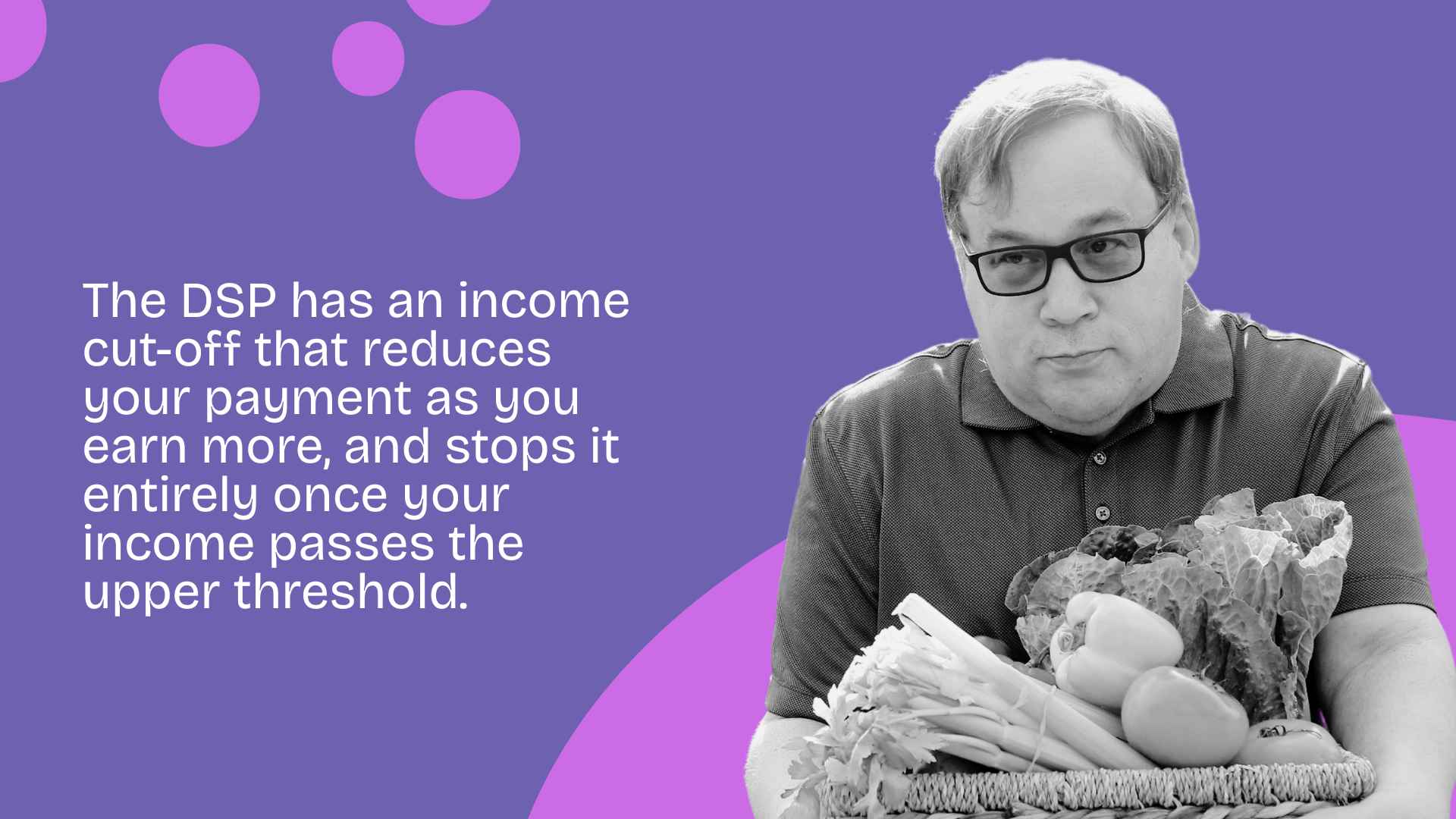
Your DSP payment reduces as your income goes up — and if your income gets too high, your payment may stop altogether. The exact cut-off depends on whether you’re single or part of a couple.
For singles:
- You can earn up to $204 per fortnight before your DSP starts to reduce.
- Once you earn around $2,528.60 per fortnight, your DSP stops completely.
For couples (combined income):
- You can earn up to $360 per fortnight before your payments reduce.
- Payments stop when combined income reaches around $3,872.80 per fortnight.
These figures apply to people aged 21 or over, or those under 21 with children. If you’re under 21 without children, the limits may be different.
Centrelink uses an income test to work out how much DSP you can receive. The more you earn, the more your payment reduces — at a taper rate of 50 cents for every dollar earned above the threshold.
What happens if your circumstances change after you start receiving the DSP?
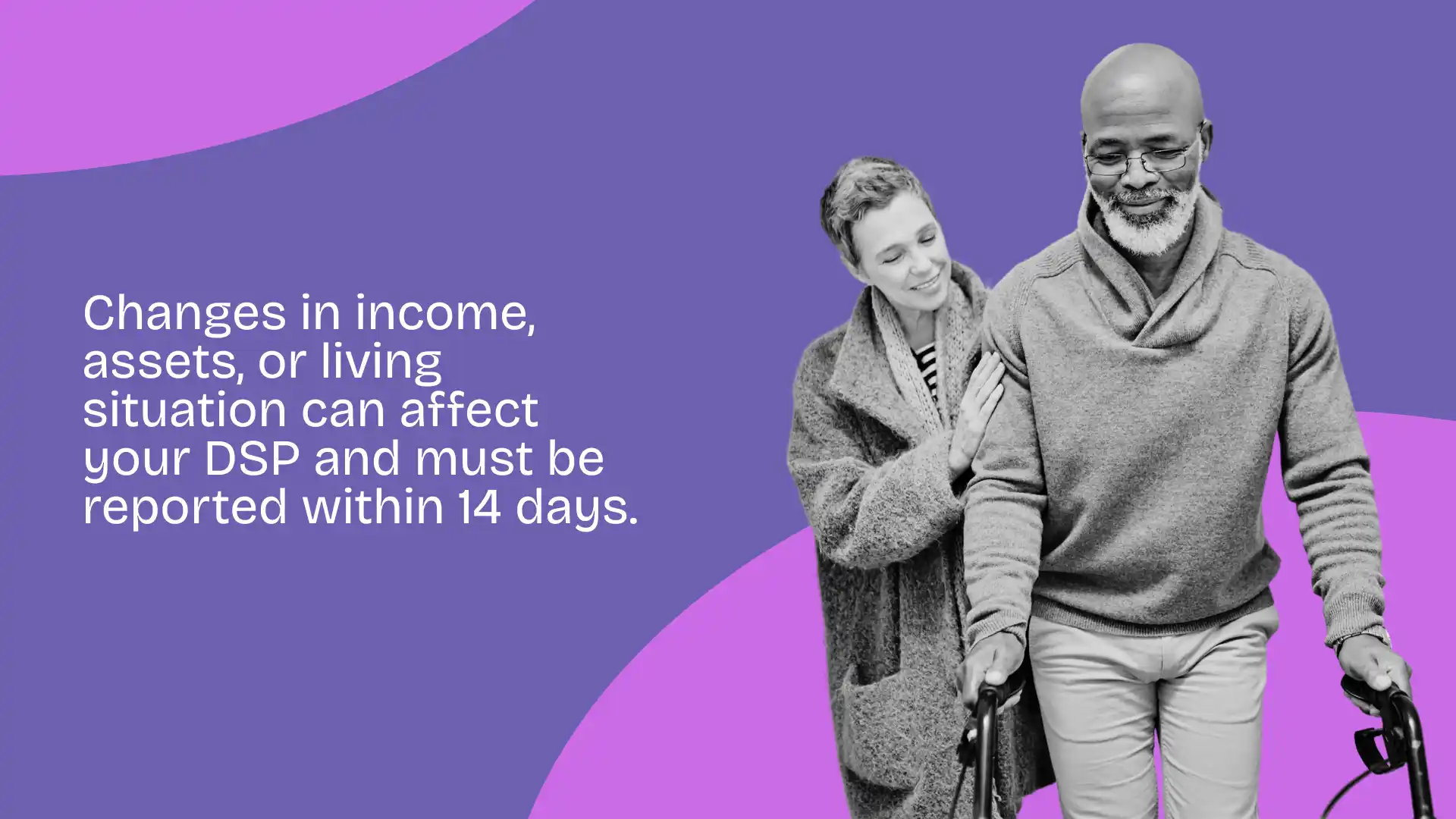
If your situation changes — like your income, assets, living arrangement, or medical condition — you need to let Centrelink know. These changes can affect how much you’re paid or whether you’re still eligible for the DSP.
Common changes you must report include:
- Starting or stopping work
- Changes to your income or your partner’s income
- Moving house or changing who you live with
- Changes in relationship status
- Improvements or changes in your medical condition
- Travelling or moving overseas
You’re required to report changes within 14 days, and not doing so could lead to overpayments, debts, or even penalties.
You can update your details online through myGov, over the phone, or by visiting a Centrelink service centre.
How does the Disability Support Pension (DSP) interact with other government benefits?
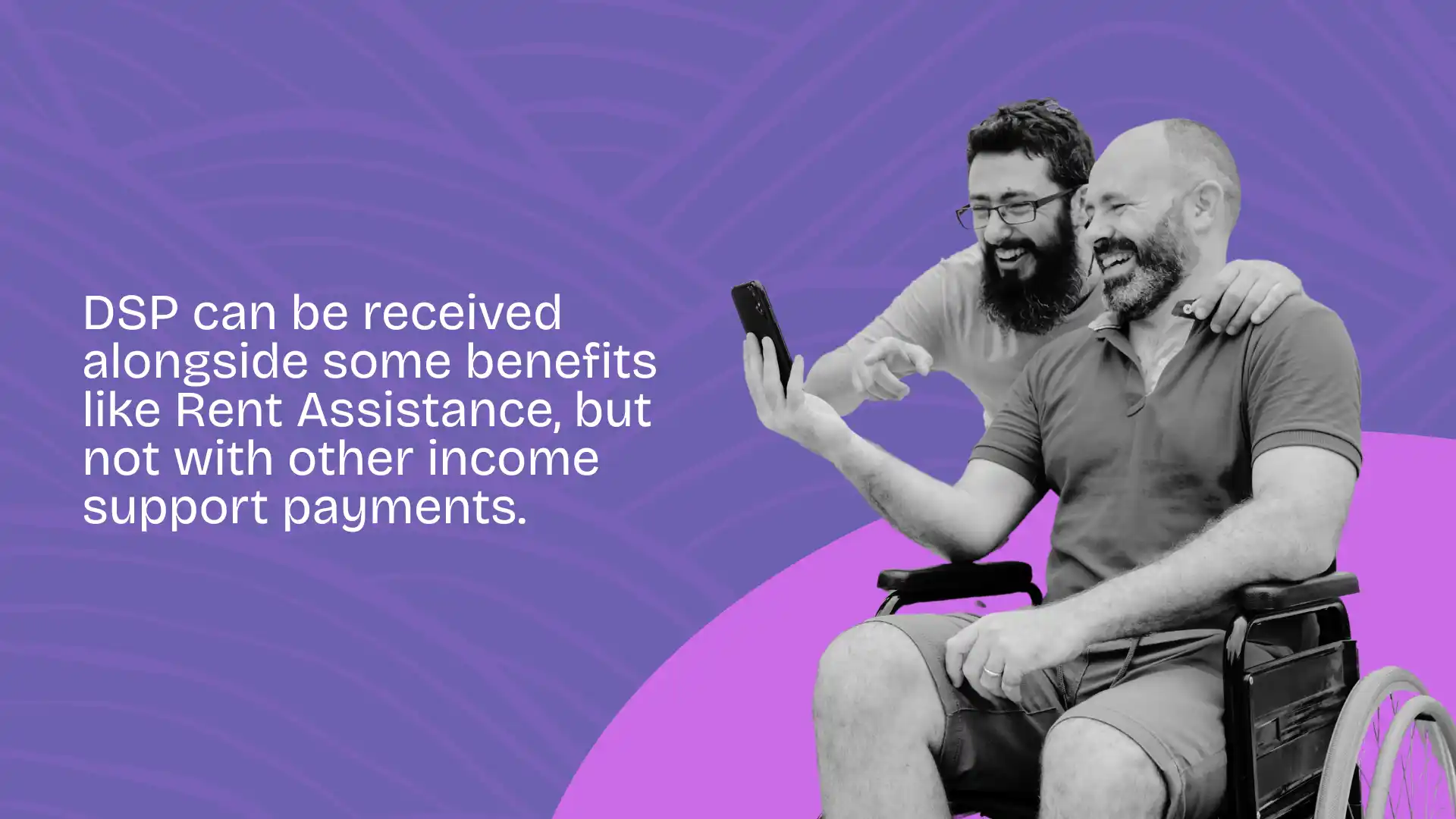
If you’re receiving the DSP, you may still qualify for other government payments and concessions — but there are rules around how they work together. Some benefits are paid on top of the DSP, while others may reduce or cancel each other out.
Here’s how the DSP interacts with other common payments:
- Carer Allowance: You can receive this alongside the DSP if you’re also caring for someone, as long as you meet the eligibility rules.
- Rent Assistance: This can be added to your DSP if you rent privately and pay over a certain amount.
- Mobility Allowance: Not available if you receive the DSP and are already using the NDIS.
- Family Tax Benefit: If you have children, you may still receive this, depending on your income.
- Energy Supplement & Pension Supplement: These are automatically included in your DSP payment if you’re eligible.
- NDIS Funding: You can receive the DSP and be an NDIS participant at the same time — one doesn’t affect the other.
However, you can’t receive two income support payments at the same time — for example, you can’t get both the DSP and JobSeeker Payment. If you’re eligible for more than one, Centrelink will usually assess which one offers the higher rate.
Related: What disabilities are covered by the NDIS?
Can you get help with employment while receiving the Disability Support Pension (DSP)?
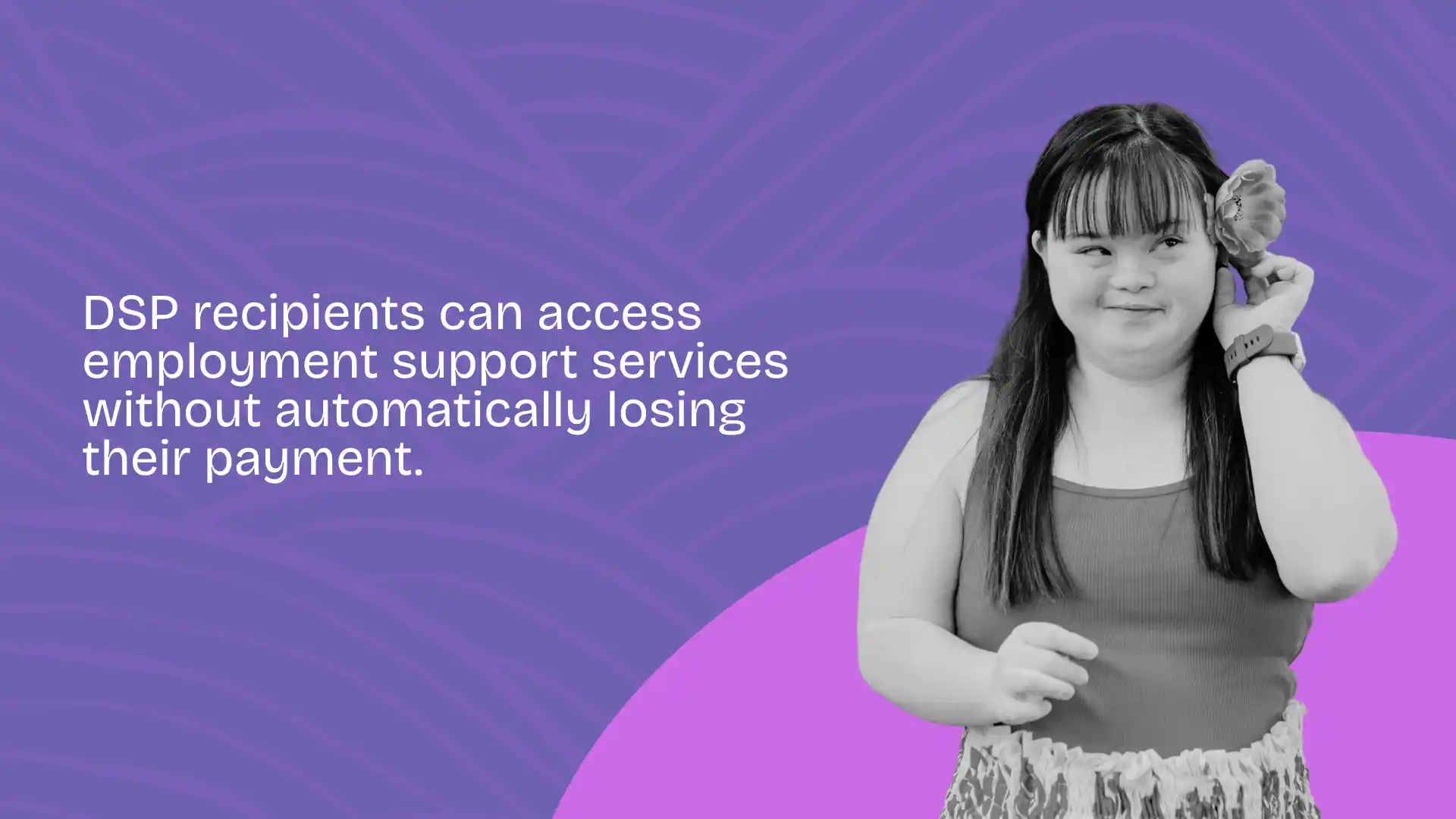
If you’re on the DSP but want to explore work or training, there’s support available to help you find a job without risking your entire payment. The government offers employment services that work with your capacity and goals — whether you want to return to work gradually or take on part-time hours.
Here’s how employment support works while on DSP:
- You can work up to 29 hours per week and still receive some DSP, depending on how much you earn.
- If you start working and your DSP stops, you may still be eligible to get it back quickly if your work ends within 2 years (this is called Pension Bonus Restart).
- You may be referred to a Disability Employment Service (DES), which helps with job searching, training, resume writing, and workplace support.
- Some DSP recipients under 35 may be required to take part in a Program of Support before qualifying, which involves training or job-readiness activities.
- The Supported Wage System is also available to help people with reduced work capacity access fair employment options.
Working while on DSP doesn’t always mean losing your payment — the system is designed to encourage participation, with safety nets in place if things change.
Final thoughts
The Disability Support Pension (DSP) provides more than just a regular payment — it offers financial security, access to extra support, and the freedom to focus on your health and daily life. Whether you’re applying for the first time or already receiving the DSP, it’s important to understand how payments work, what affects your eligibility, and what additional support might be available.
If your circumstances change, or if you’re thinking about returning to work, help is available. The system is designed to be flexible, with built-in support to guide you through each stage.
For the most accurate and up-to-date information, visit the Services Australia DSP page.
